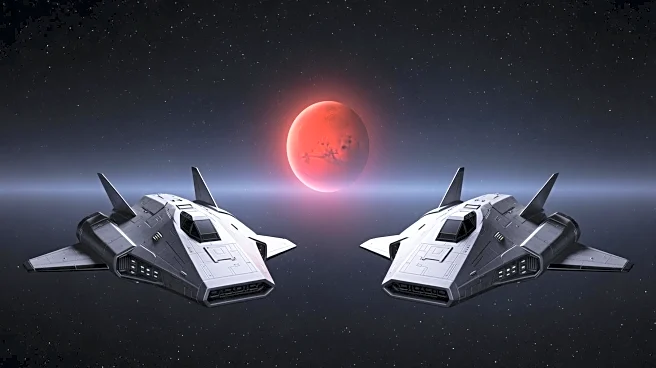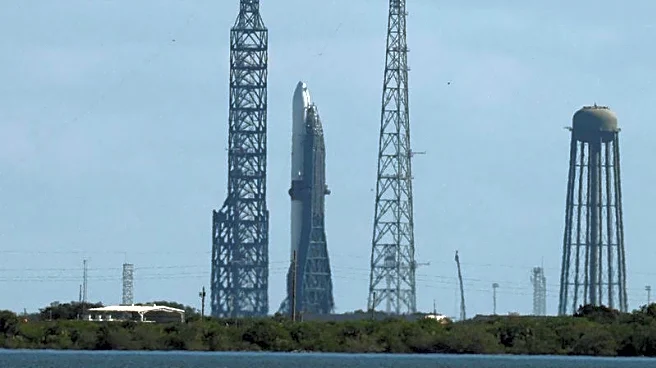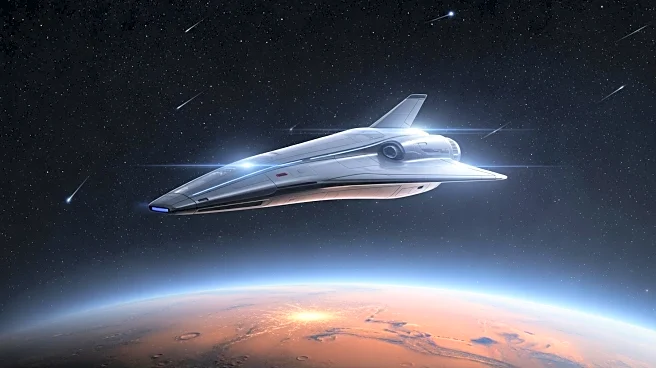What's Happening?
NASA has successfully deployed its twin ESCAPADE spacecraft, designed by Rocket Lab, into orbit following their launch aboard Blue Origin's New Glenn rocket. The mission, which began on November 13, marks
the first coordinated two-spacecraft orbital science mission to Mars. The ESCAPADE mission aims to study Mars' magnetosphere and its response to solar activity, as well as the movement of energy and particles around the planet. The spacecraft will undergo a yearlong Earth-proximity phase to build the necessary speed for a trans-Mars injection burn planned for November 2026. The satellites are expected to arrive at Mars in September 2027, with the science mission scheduled to begin in spring 2028.
Why It's Important?
The ESCAPADE mission is significant as it will provide valuable insights into Mars' environmental conditions, which are crucial for future robotic and human missions. Understanding the planet's magnetosphere and its interaction with solar activity can help scientists predict space weather and its effects on Mars. This knowledge is essential for planning safe and successful missions to the planet. The mission also represents a collaborative effort involving multiple institutions, including the University of California, Berkeley, NASA's Goddard Space Flight Center, and Blue Origin, showcasing the importance of partnerships in advancing space exploration. The findings from ESCAPADE could contribute to the broader understanding of planetary science and the potential for human exploration of Mars.












